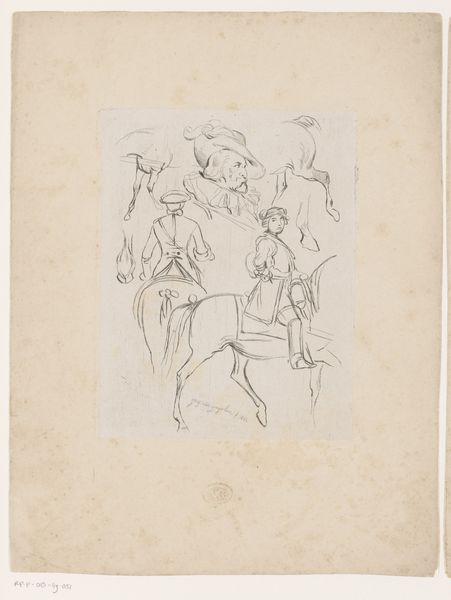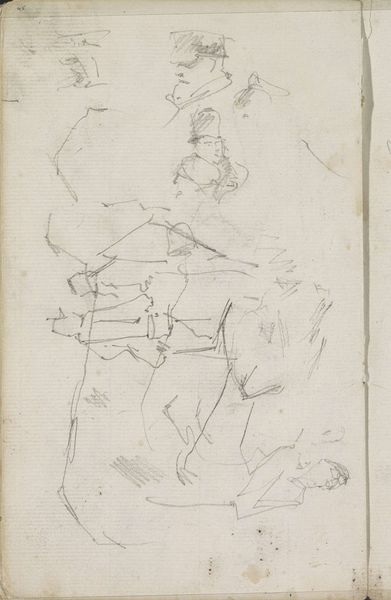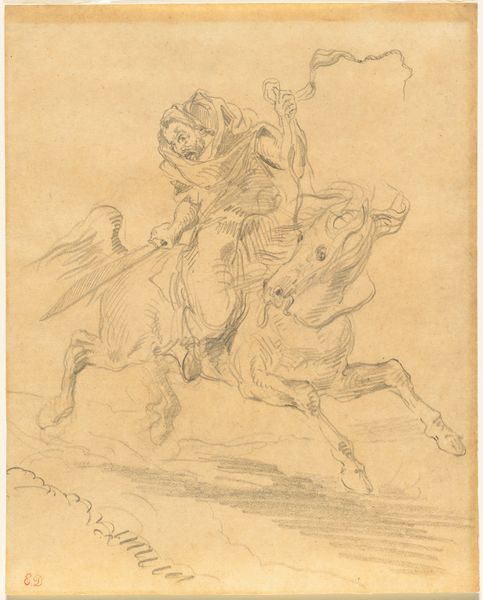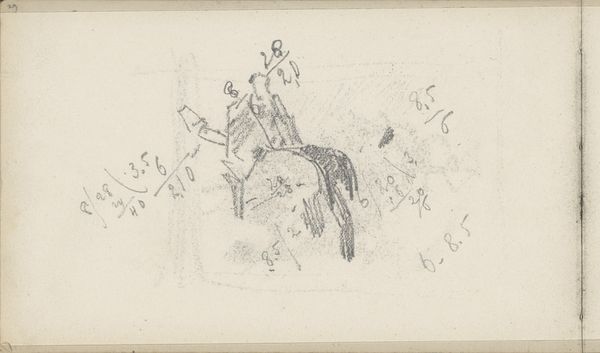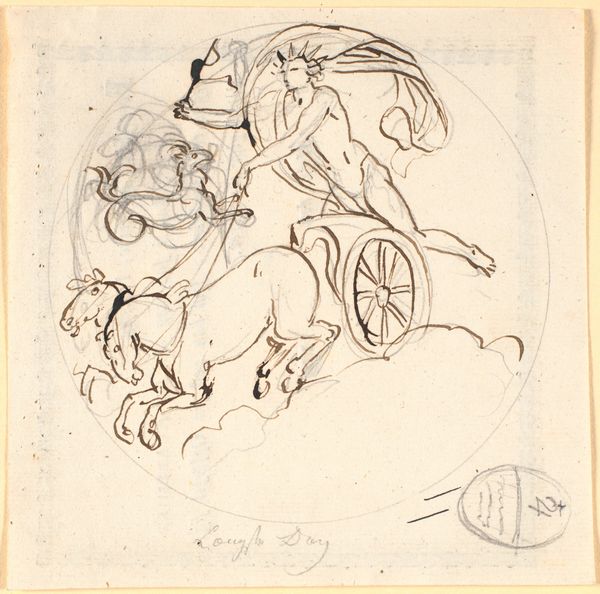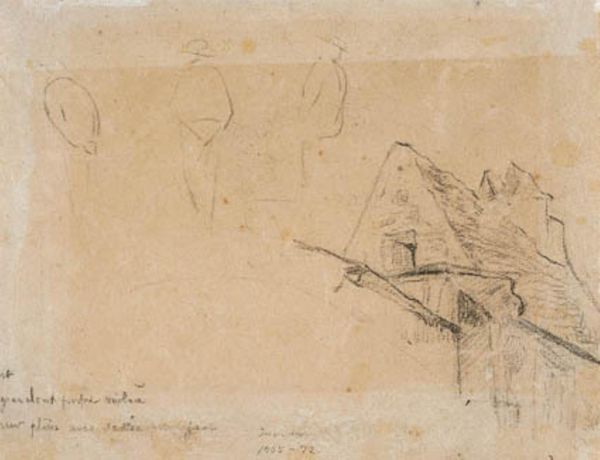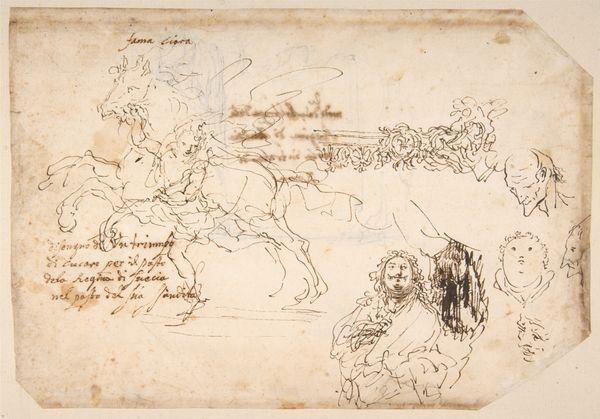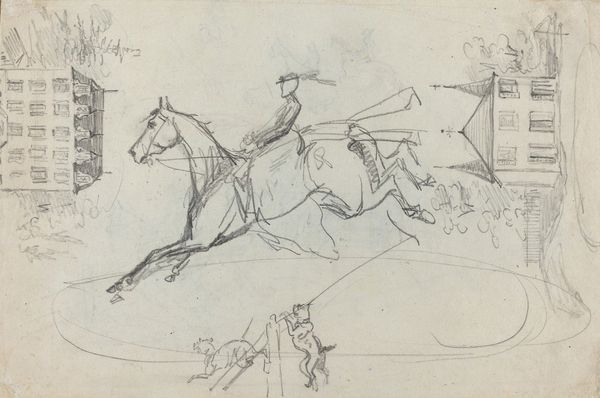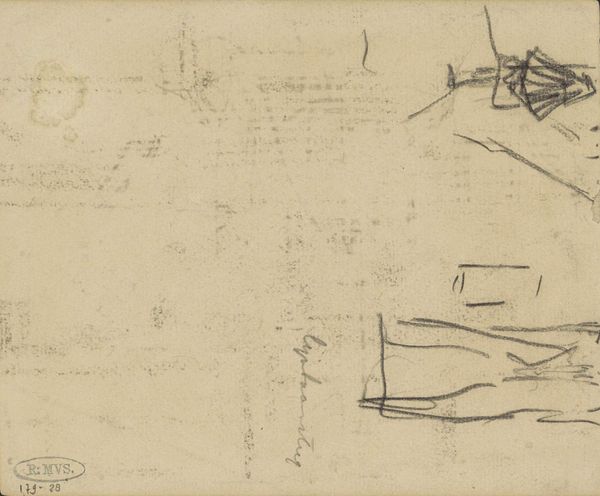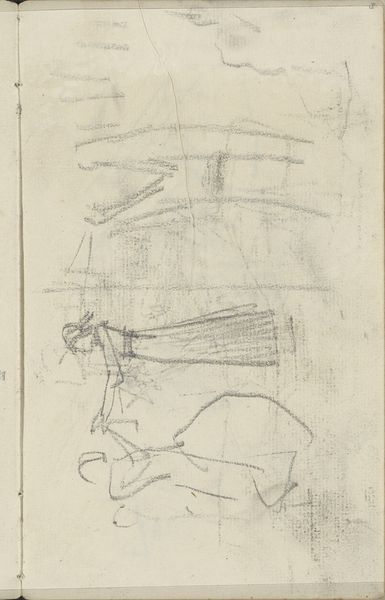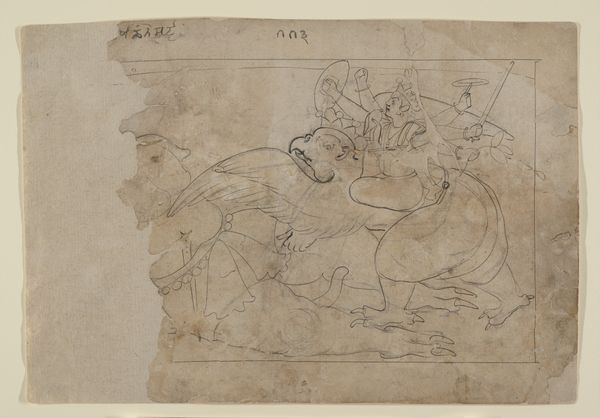
Caricature of Self (recto); Cab Thrown by a Horse, with Other Sketches (verso) n.d.
0:00
0:00
drawing, print, paper, graphite
#
drawing
# print
#
caricature
#
landscape
#
paper
#
graphite
#
cityscape
Dimensions: 95 × 101 mm
Copyright: Public Domain
Curator: This drawing, titled "Caricature of Self (recto); Cab Thrown by a Horse, with Other Sketches (verso)," comes to us from the hand of George Cruikshank. Undated, it is rendered in graphite on paper. What strikes you most when you view this? Editor: Chaos, actually! My first impression is one of urban upheaval – a literal overturning, and a jostling of societal norms. The upturned cab is quite dramatic. Curator: Indeed! Let’s consider Cruikshank’s techniques and influences. As a printmaker and caricaturist, his work often appeared in publications commenting on social and political issues. Examining the means of production, it is clear he leveraged his skill as an engraver to make inexpensive reproducible artworks available to a wide audience. Editor: Absolutely. The cab accident points to rapid urban growth and its social costs in the 19th century. These themes resonate, reflecting an era where unchecked capitalism and technological advancements impacted different demographics unequally. There's almost a cruel humor in depicting the disarray caused by industrial progress. Who suffers, and who profits from such spectacles? Curator: The paper itself is fascinating. It has imperfections, slight browning, and folds that reflect its status as a functional object – something to be sketched on, carried around, perhaps discarded and reused. It challenges our conceptions of "high art," showing us the importance of drawing in the context of commercial printmaking. Editor: Agreed, we must recognize the class tensions inherent in this representation. The image suggests the risks associated with urbanization, disproportionately affecting the working class who lacked safety nets when injured or displaced by such incidents. It invites reflections on visibility, on who’s story gets told, and from what vantage point. Curator: Ultimately, this small drawing on paper opens a window into both the techniques of graphic satire and the turbulent social landscapes of 19th-century England. Editor: It reminds us that what appears as a simple caricature can hold layered social commentary, prompting us to reflect on ongoing disparities and the importance of analyzing historical representations through the lenses of social justice and equity.
Comments
No comments
Be the first to comment and join the conversation on the ultimate creative platform.


